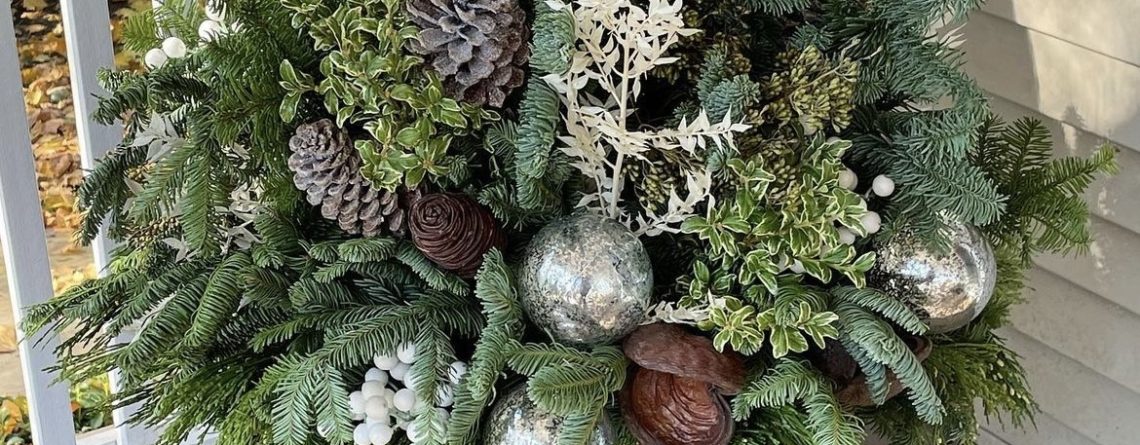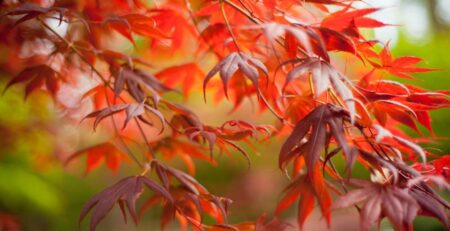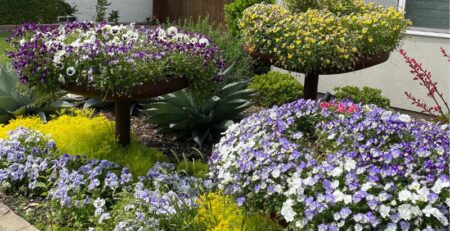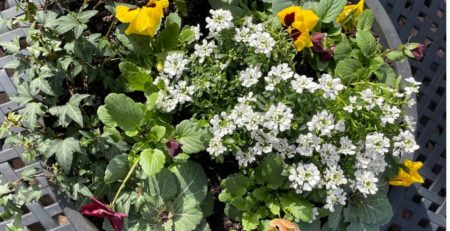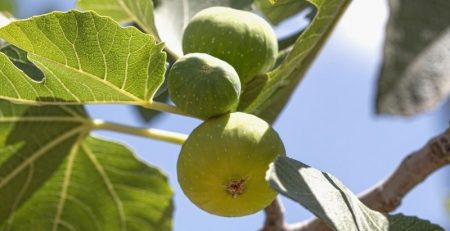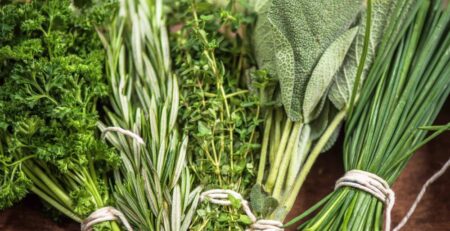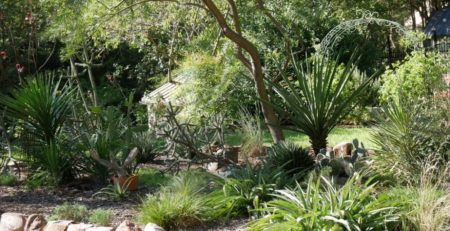Carefree Winter Containers
Editors’ Note: We are pleased to announce this article as the second in our series on container gardens, written to inspire beautiful containers that celebrate our most festive seasons. Many thanks to our incredible writer Cindy Bolz, whose creativity and expertise helps our gardens shine all year.
The front porch should be as inviting in the dreary winter days as it is in the spring, and fresh and lively containers are a wonderful way to say “welcome.” Oh, this is easy! Some of the winter containers featured here do not require sun, heat, fertilizer, or even water. The cool temperatures allow most freshly cut evergreen branches to survive the entire month of December with minimal attention. The following are suggestions to help you create a container with evergreen branches as the foundation. We will address the carefree container and then discuss containers of living plants that require a bit of water and care.
One design strategy for winter containers utilizes dried sticks, evergreen branches, and non-plant decorations. Start with a trip to your nearest arts and crafts or floral supply store for birch branches, red dogwood twigs, or other tall sticks for the center of your creation. Keeping proportion in mind, a large container arrangement requires the sticks to be perhaps three feet tall. Smaller pots will require shorter branches. An easy rule of thumb for considering container proportions is the 2/3 guideline, which calls for 2/3 plant height and 1/3 container height. If your planter is 12 inches tall, try to achieve approximately 24 inches of visible plant height, for a total of 36 inches of amazing container design. While shopping, also buy some pine cones, berries, lotus pods, and other seasonal dried items, especially those on sticks that can be easily placed to fill in the arrangement. I happen to have some apples, pears, and pinecones on 10-inch sticks in my seasonal decorating bins for this use.
You can also take trimmings from your own yard. Both evergreen plants and leafless deciduous shrubs provide beautiful options. Evergreen plants offer rich color and lush greenery and deciduous shrubs are full of winter architecture and texture that is hidden for much of the year. I have lots of hollies and two large magnolias in my yard, so I will trim branches for some of my containers. Magnolia seed pods provide a structural shape and a contrasting texture that works well in winter containers. If you do not have abundant conifers or pines on your property but want to achieve this style, consider dropping by a Christmas tree site or your favorite garden center for sprays sold for wreaths and garlands. If they do not have these for sale, ask if you can purchase some of their throw-away limbs and branches.
When building a winter container of decorative objects, trimmed branches, dried twigs, and non-living plant material, you will still place soil in the container up to about 3 inches below the rim, even though you are not planting live plants. This soil will provide stability for stems of greenery, sticks, or branches.
Start with the taller center items like sticks or branches, and press them into the soil deeply enough so they will not tip over. Then press the stems of branches of greenery into the soil. After you have placed the branches around the planter edge, stand back and see how it looks, then add more branches in varied heights where necessary for fullness.
Now it is time to get creative! Use the same thriller, filler, spiller principle that we discussed in the Fall Containers article, but this time highlight the winter season. Add pine cones, lotus pods, dried wands of red berries, or dried branches from your own garden. Some of these, like the beautiful seed stalks on inland sea oats, or sprays of red berries from nandina or hollies, and even the beautiful pods from mimosa trees can be used as fillers. Finish off with a big ribbon bow tucked in toward the front lower portion of the arrangement. Let the ends of the ribbon flow a bit, and you have your spiller effect. Viola! Done!
Another container idea, possibly for the front porch, starts with willow branches decked in tiny lights set by a timer to come on at dusk or to remain lit all the time. You can find these branches at floral supply stores and arts and crafts centers. As with our first container, place the light-up branches in soil to begin your arrangement. If your lights feature a timer, set the timer before you put evergreen stems in place and before you fill the container. Fill in the edges with holly, magnolia, or conifer bunches, allowing some to drape over the edge of the container. Then add taller sprays around the lighted willow branches, and fill in with decorative berries, pine cones, and more greenery until the arrangement is full. Many winter holidays celebrate bringing light into a dark season, so adding lights to your winter garden containers is a beautiful way to share holiday joy.
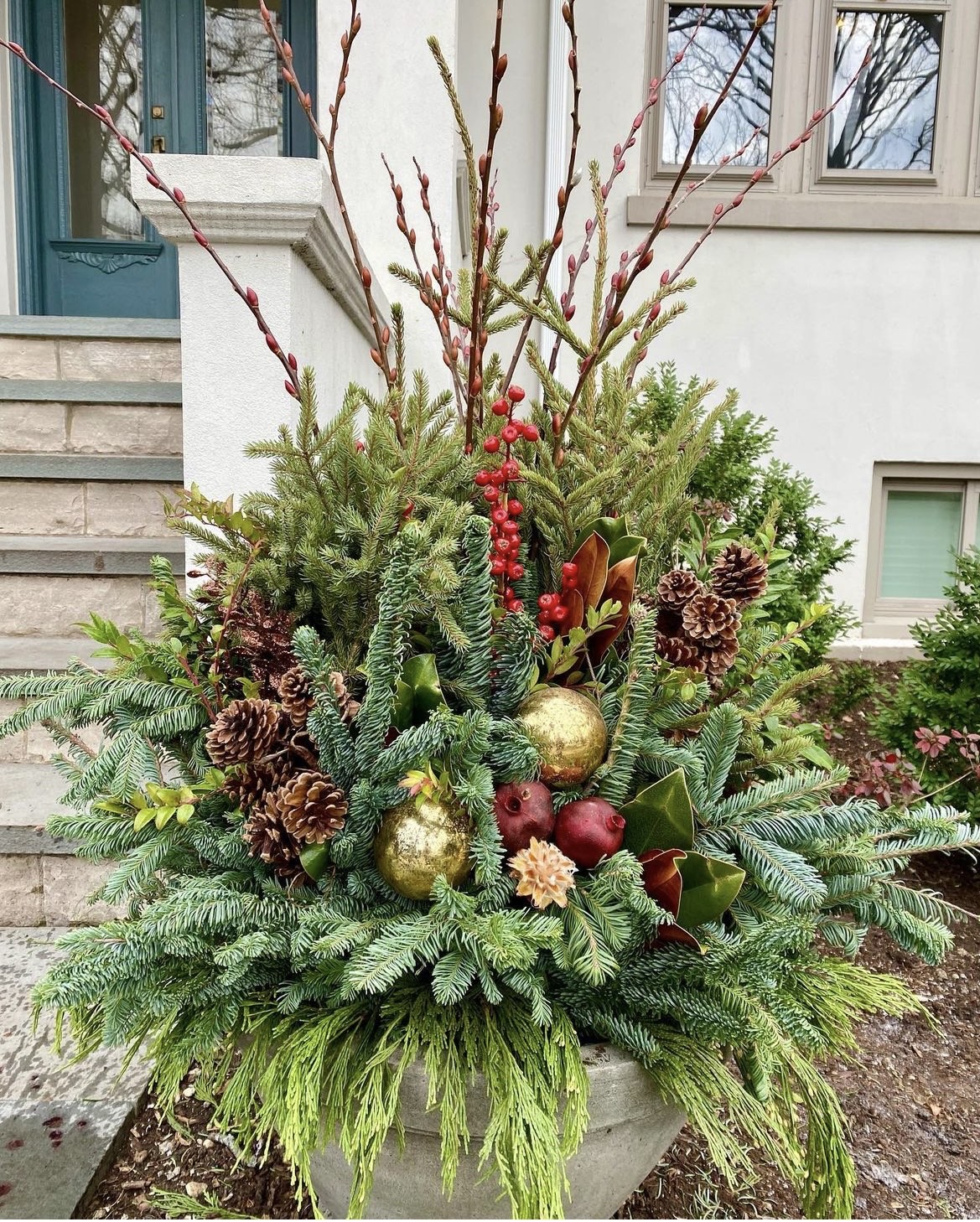
Photo credit: Bridget Schroeder
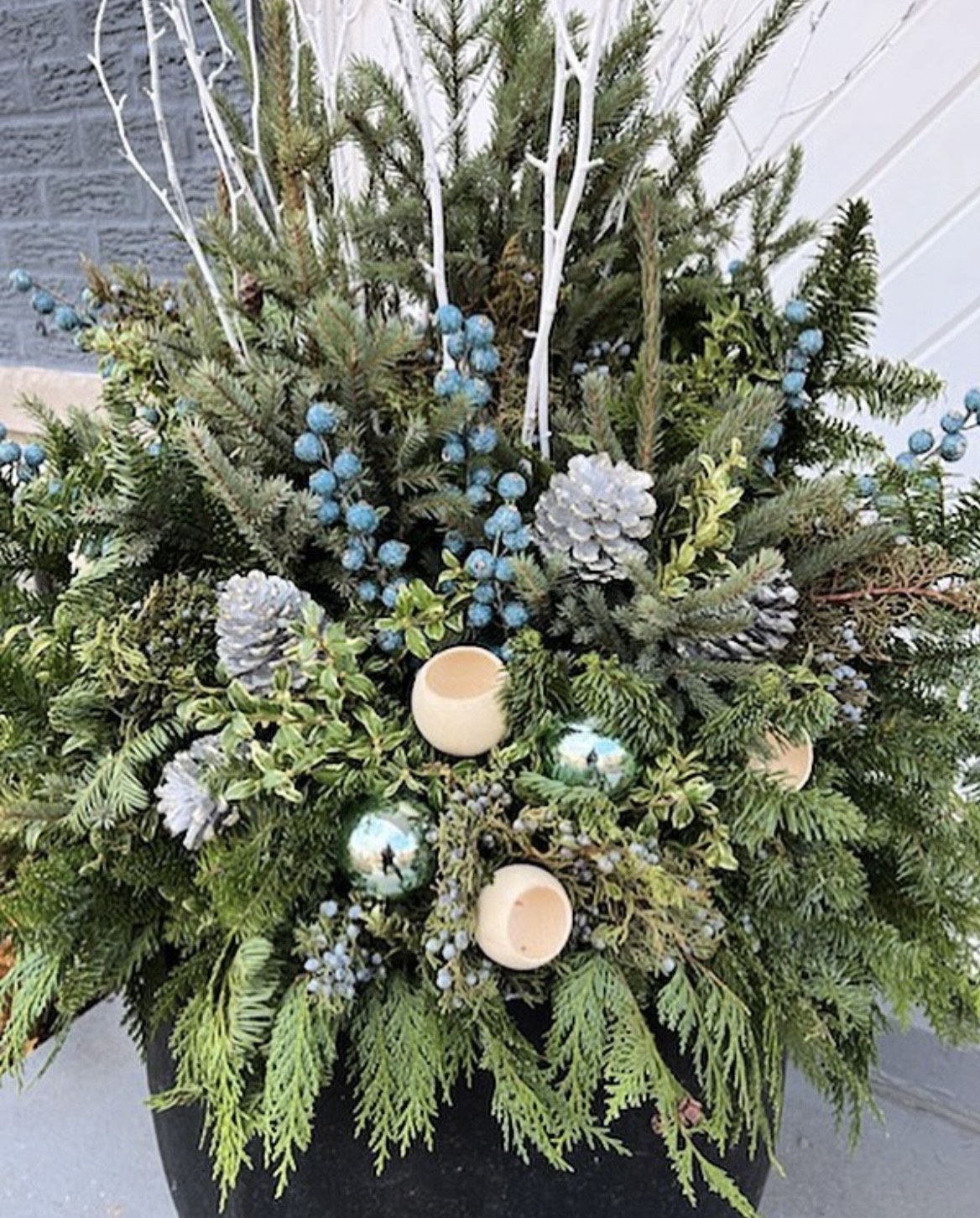
Photo credit: Bridget Schroeder
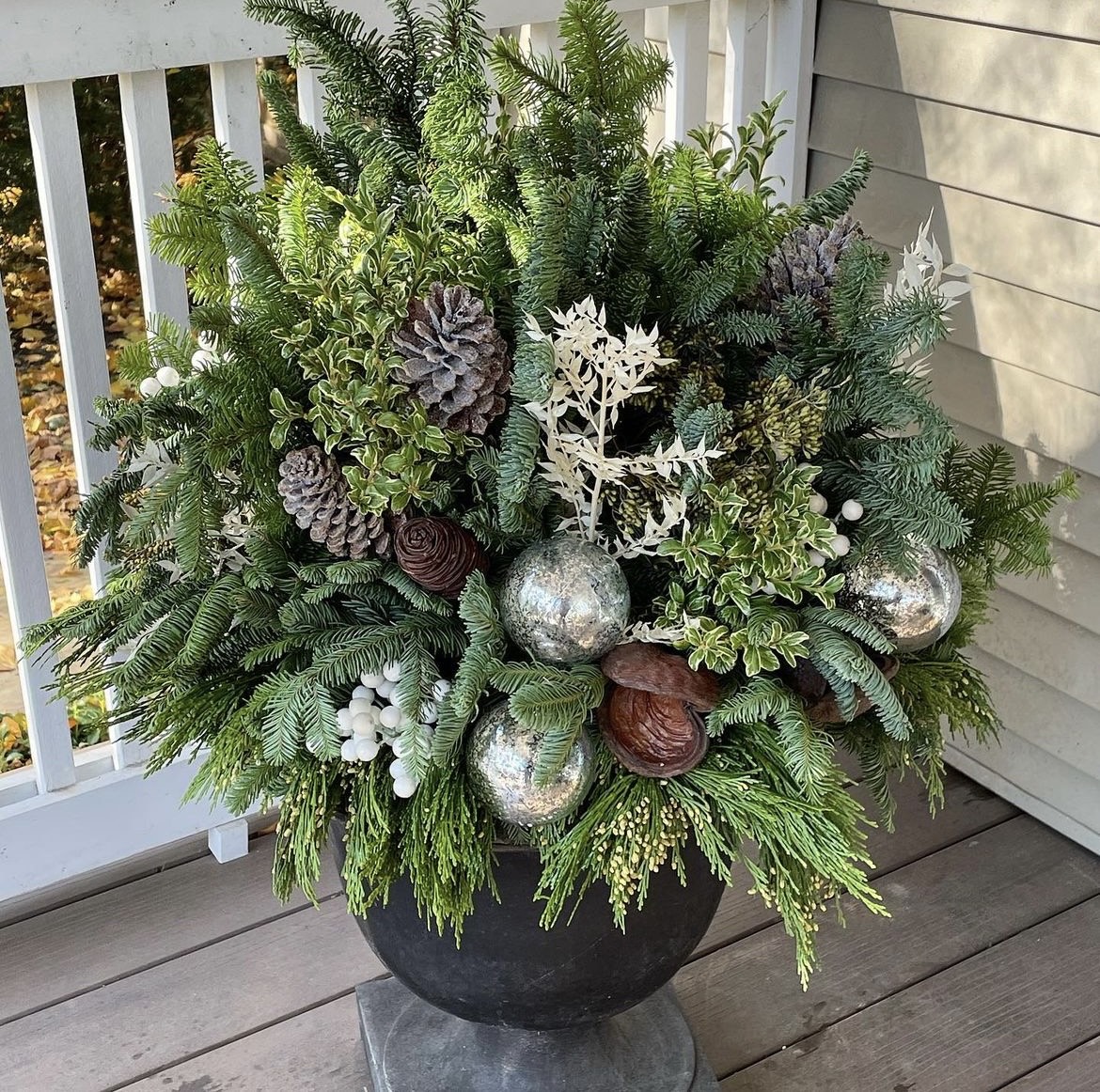
Photo credit: Bridget Schroeder
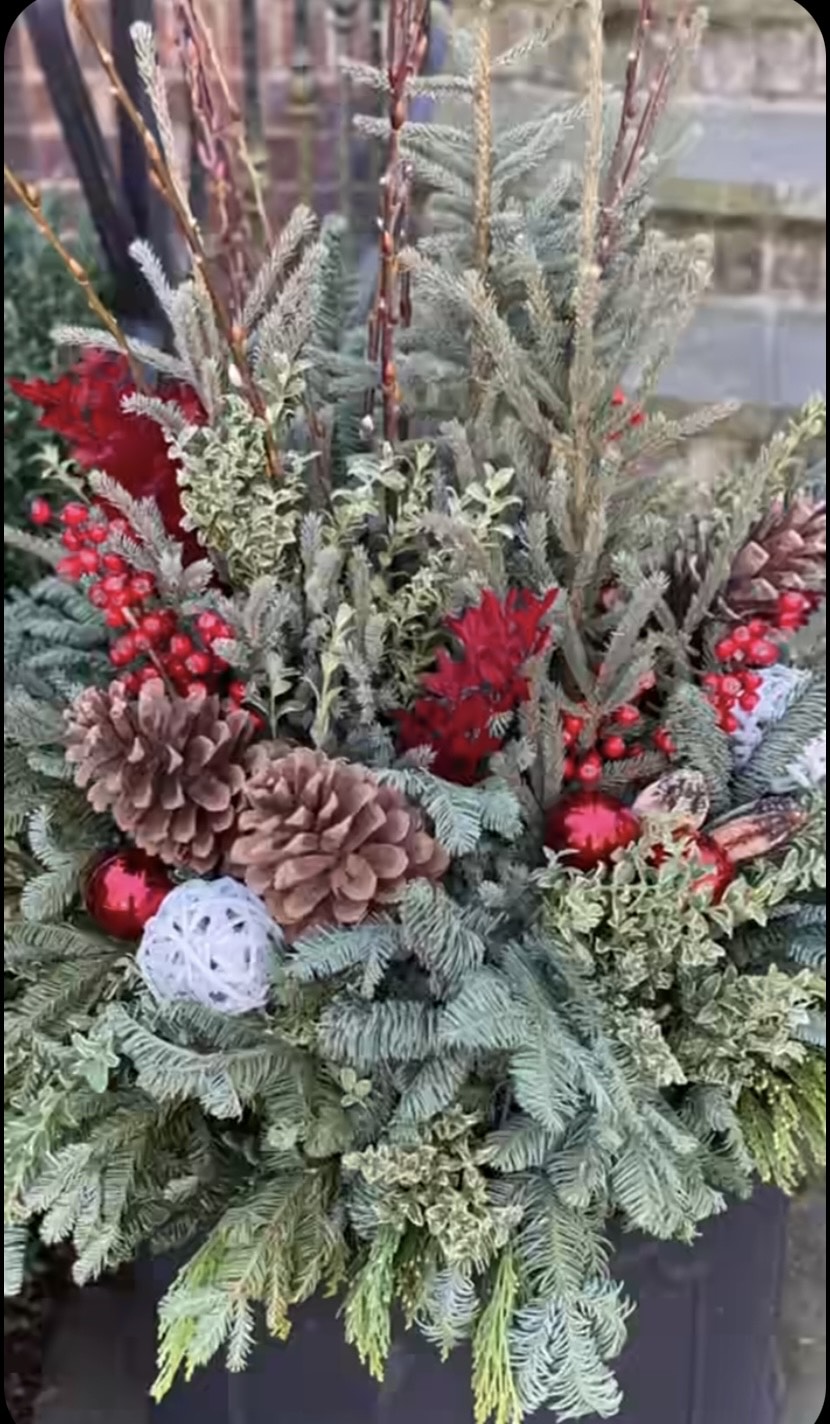
Photo credit: Bridget Schroeder
In preparing any container, it is necessary to continue working with the shape and texture until you have an abundant and attractive arrangement. Do not skimp on fillers or give up too early. I often think these projects will be simple and then, after I start putting together my “creation”, I am amazed by how the container develops during the process. Just keep adding and rearranging until it looks right.
For living plants, or a “planted” winter container, choose pots of fiberglass, plastic, or metal that will not damage in a hard freeze. Usually here in Dallas it is safe to use a ceramic or porcelain planter, but these past two years we have seen a sample of harsh temperatures. In this situation, it is better to be cautious. Choose a soil that will not get waterlogged because cold temperatures change the way the plants absorb water. Adding extra perlite or vermiculite to potting soil helps with drainage, so if the potting soil you have does not feel light and airy, stir in one of these products, mixing well.
Common plant choices are sold at garden centers now and include cabbages, kales, pansies, violas, and cyclamen, which all give nice color. If you are planting a large container, consider a boxwood or small holly for green contrast, and surround the shrub with flowers. Most garden centers have small rosemary and conifer “Christmas trees” that work perfectly as a starting point. If you have tiny ornaments, you can decorate one of these plants the way you would a Christmas tree, and use it alone on your front porch.
If you want your container to simply reflect the beauty of winter or you want to be able to adapt your container to an entire season of celebration, choose a general evergreen or a deciduous shrub with structured branches. This will allow you to celebrate many holidays and special days by adding lights, a sparkly Happy New Year sign, and unlimited decorations. There are many attractive plants that stand out in winter containers.
One option that I love is mahonia. Mahonia’s spiky leaves seem to suggest winter to me. I am a fan of the ‘Beijing Beauty’ variety. It is very striking with its distinctively shaped spiny leaves.
https://m.planttagg.com/#/public/details?key=5RJA4BFE5PVYDGQV8GVC43ONTOH
‘Marvel’ mahonia is especially attractive in containers and can be moved later to the garden to enjoy for years to come. Mahonias also flower in the winter, and the yellow flowers of both varieties are gorgeous.

